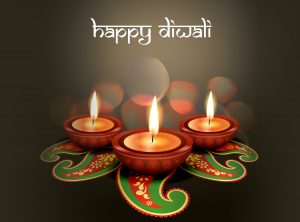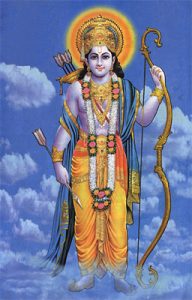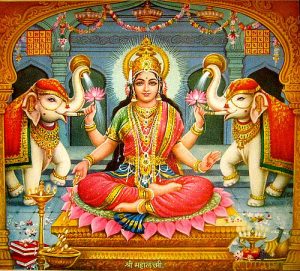
Diwali is a five day festival in India. It begins with Govatsa Dwadashi, then Dhanteras, followed by Kali Chaudas and Naraka Chaturdashi, and then the night of Diwali itself. Diwali or Deepavali is the Indian festival of lights. “Deepa” means light and “avali” means a continuous line. Diwali occurs just before the Indian New Year. Diwali 2016 will be celebrated on different days in various parts of the world. Since Vedic astrology or Jyotish is a lunar based system, it calculates holidays based on phases of the Moon. According to mypanchang.com, Diwali 2016 falls on October 29 in North America and the West Indies. However, India and the rest of the world will celebrate Diwali 2016 on October 30.
As explained on mypanchang.com, the new Moon (amavasya) has to prevail for over 2 hours after sunset to celebrate Diwali and perform Lakshmi puja. This will only occur in North America on October 29.
Indian new year 2016 is on October 31 worldwide. This is the Gujarati and Marwadi New Year. Other parts of India celebrate the new year at different times of the year, according to their own traditions.
 Diwali celebrates Lord Rama’s return back home after a 14 year period of exile. The residents of Ayodhya (I-yo-the-yah) celebrated his homecoming by lighting rows and rows of lights, or diyas, and waving sparklers. Rama symbolizes the path of righteousness or dharma. His return is a metaphor for the victory of good over evil. He performed his duty, stayed true to his path, and triumphantly returned home.
Diwali celebrates Lord Rama’s return back home after a 14 year period of exile. The residents of Ayodhya (I-yo-the-yah) celebrated his homecoming by lighting rows and rows of lights, or diyas, and waving sparklers. Rama symbolizes the path of righteousness or dharma. His return is a metaphor for the victory of good over evil. He performed his duty, stayed true to his path, and triumphantly returned home.
Indians celebrate Diwali by wearing colorful, new clothes and honoring the goddess Lakshmi (luck-shmee), the goddess of prosperity, fortune, and beauty. Their homes are brightly lit with clay diyas. Some also regard Diwali as the day on which Lakshmi and Vishnu were married. Homes are cleaned from top to bottom so that Lakshmi can grace the home with her presence. Pujas (ritual worship) to Lakshmi are traditionally performed on Diwali. People feast on a sumptuous variety of sweets made from ingredients such as brown sugar, jaggery, saffron, along with ghee (clarified butter), as well as cardamom, powdered cinnamon, nuts, and rose water. Mypanchang has listed the auspicious times for Lakshmi puja.
 Shri Vivek Shatri of the Shri Krishna Yajurveda Pathashala had this to say about Diwali: “The darkness of the demon is gone and there is light. Rama and Krishna are forms of Vishnu. For Lakshmi puja, we worship Lakshmi and Kubera. Kubera is the treasurer of the Vedic gods and goddesses. One of Vishnu’s names is Kubera. Kubera is the step brother of Ravana. His kingdom was (Sri) Lanka. When Ravana became strong, he defeated Kubera. Afterwards, Kubera went North.” In Vaastu Shatra, the Northern direction is associated with Kubera and prosperity. “Kubera is the deity who owns gold, diamond, precious things. People should clean their homes for Diwali. For Lakshmi puja, they can worship money, jewelry, bank books, and credit cards. They can chant the Maha Lakshmi Stotram 15 times. There is also a small stotram for Vishnu called the Govinda Ashtakam.”
Shri Vivek Shatri of the Shri Krishna Yajurveda Pathashala had this to say about Diwali: “The darkness of the demon is gone and there is light. Rama and Krishna are forms of Vishnu. For Lakshmi puja, we worship Lakshmi and Kubera. Kubera is the treasurer of the Vedic gods and goddesses. One of Vishnu’s names is Kubera. Kubera is the step brother of Ravana. His kingdom was (Sri) Lanka. When Ravana became strong, he defeated Kubera. Afterwards, Kubera went North.” In Vaastu Shatra, the Northern direction is associated with Kubera and prosperity. “Kubera is the deity who owns gold, diamond, precious things. People should clean their homes for Diwali. For Lakshmi puja, they can worship money, jewelry, bank books, and credit cards. They can chant the Maha Lakshmi Stotram 15 times. There is also a small stotram for Vishnu called the Govinda Ashtakam.”
The Shri Krishna Yajur Veda Pathashala will be performing a Lakshmi puja for the new year. They will offer flowers and saffron and chant the Vishnu Sahasranam and Lalita Sahasranam. Traditionally, there is no havan (fire ceremony) for a Lakshmi puja. The dakshina for the puja is $35. To have the puja performed on your behalf or to gift it to someone, please send an email to sohamvg@gmail.com.
Diwali marks the celebration of light over darkness, as Rama was victorious in defeating the demon Ravana prior to his return to Ayodhya. It is also a time when we can honor our own inner light and let it shine forth into the world.
Happy Diwali 2016! Shubh Deepavali!
Recent Comments
http://Dr.%20Schavi%20M.%20Ali
October 29, 2016 at 5:32 pmMay the Earth be showered with peace, love, and health.
Comments are closed.